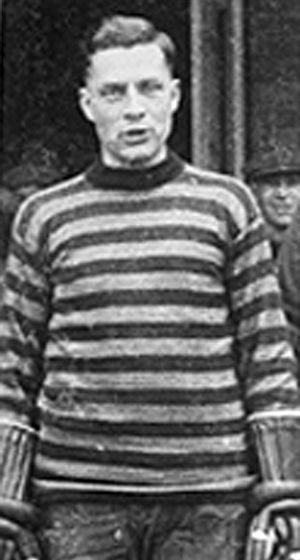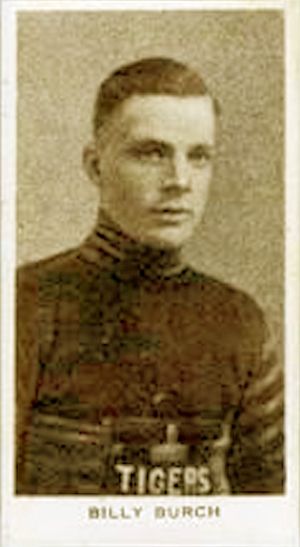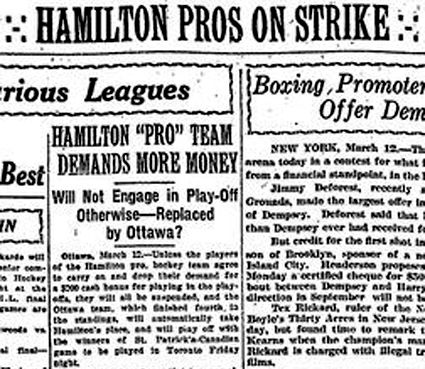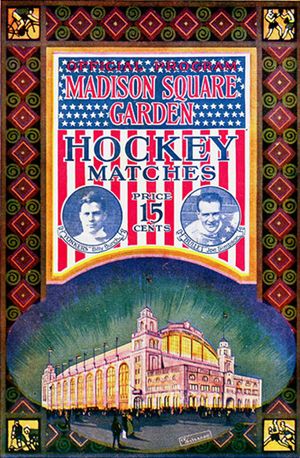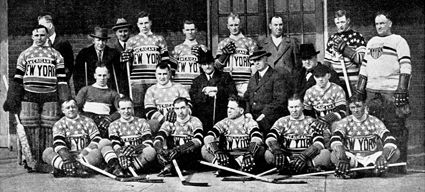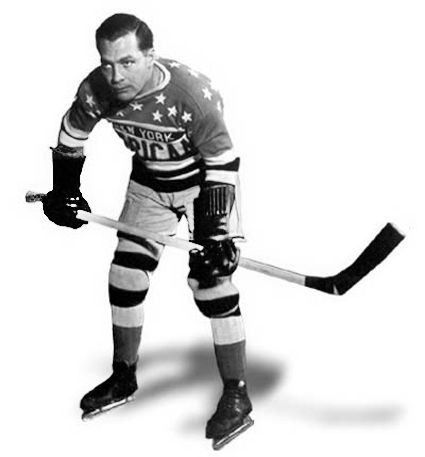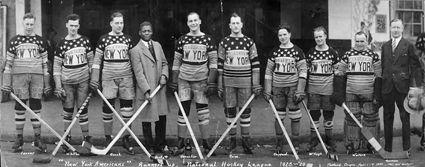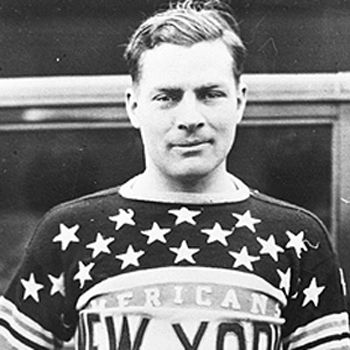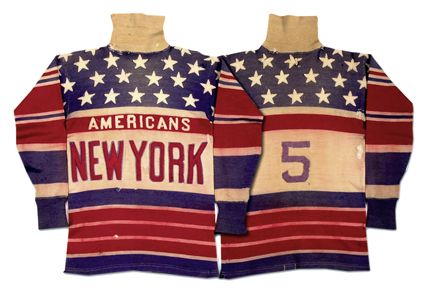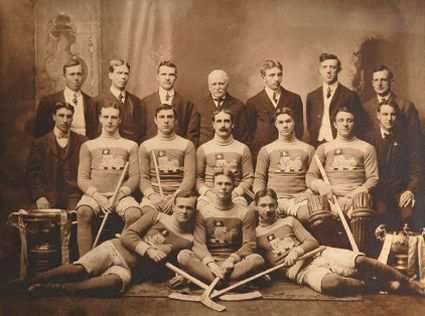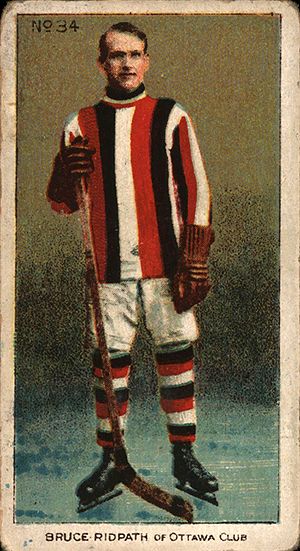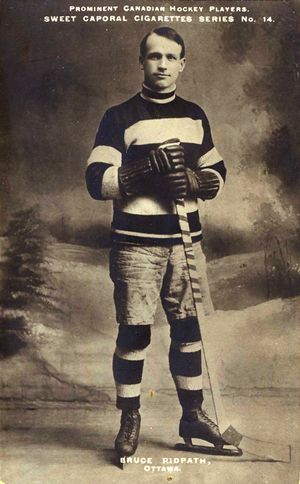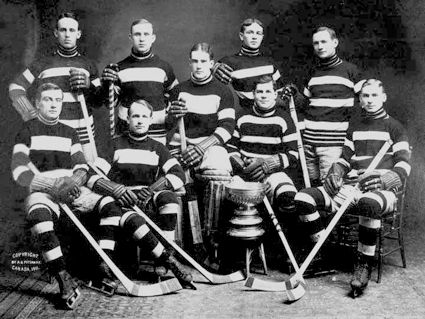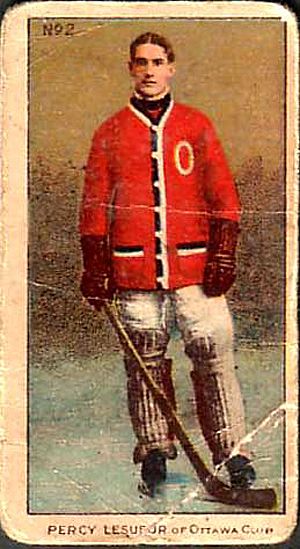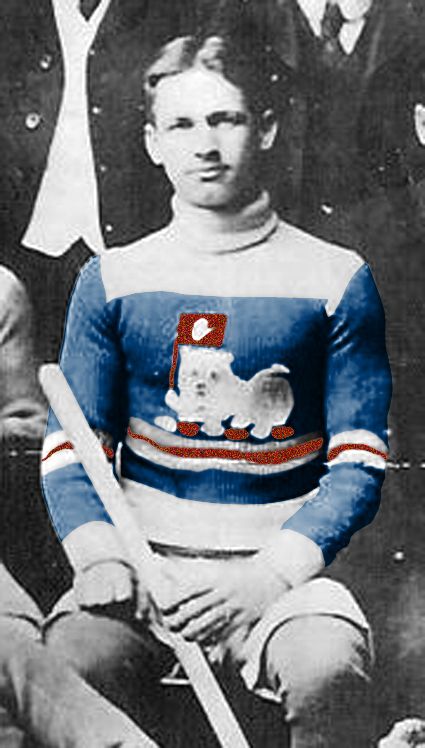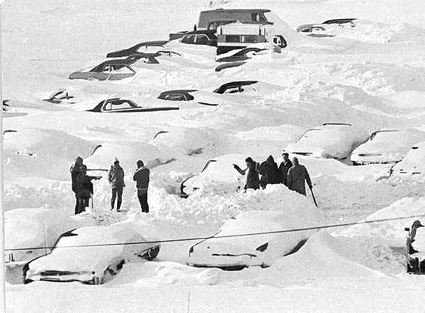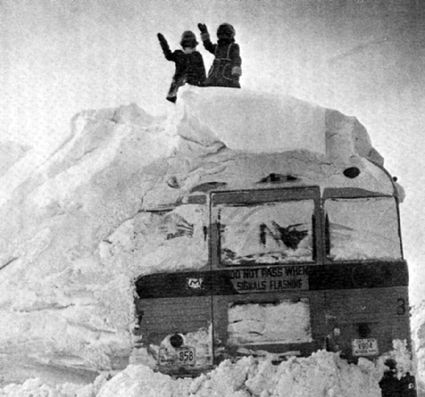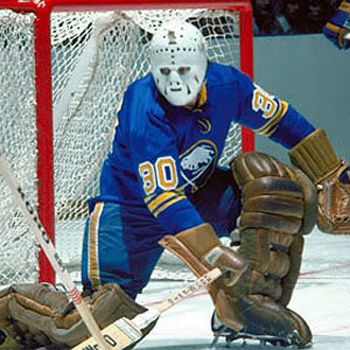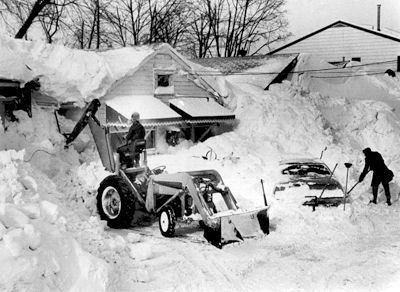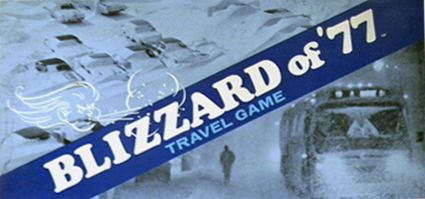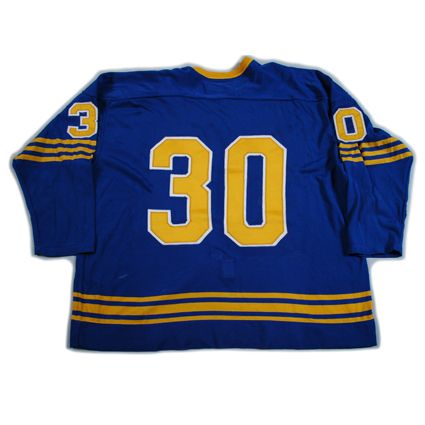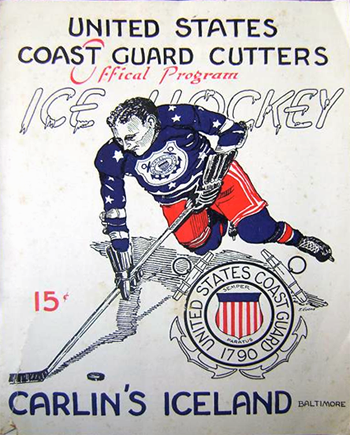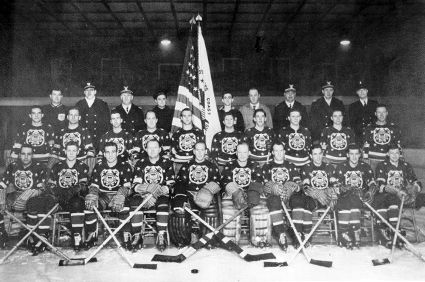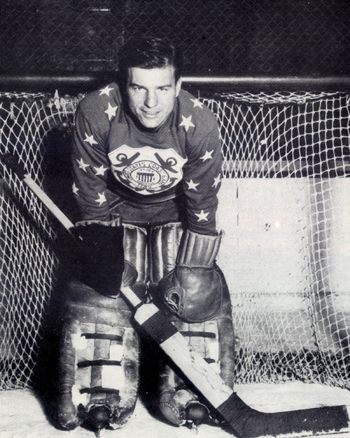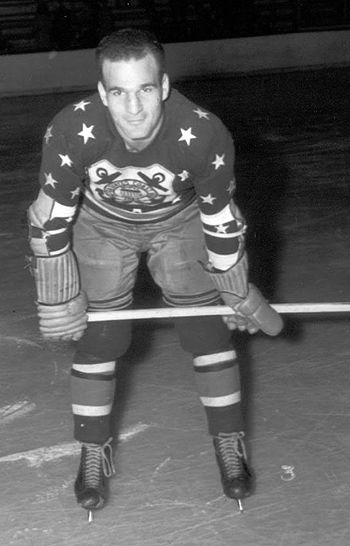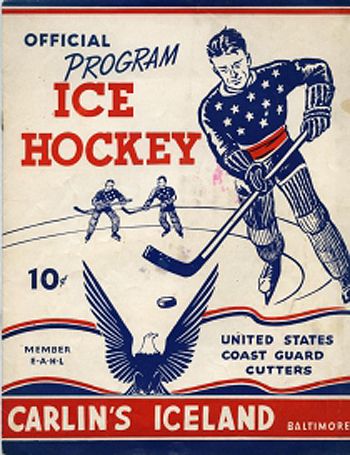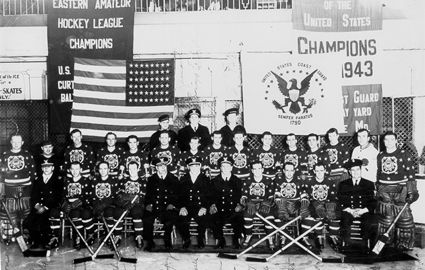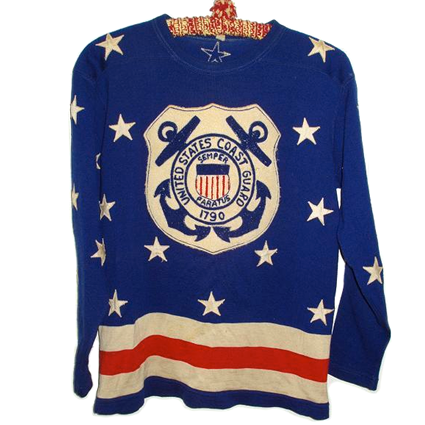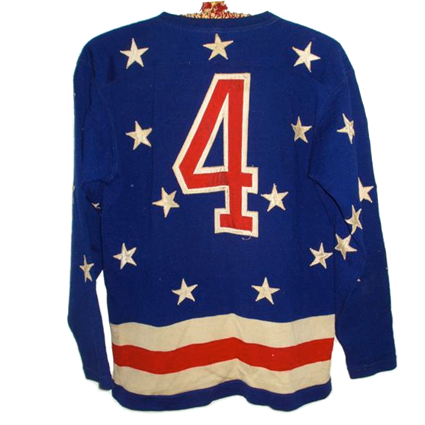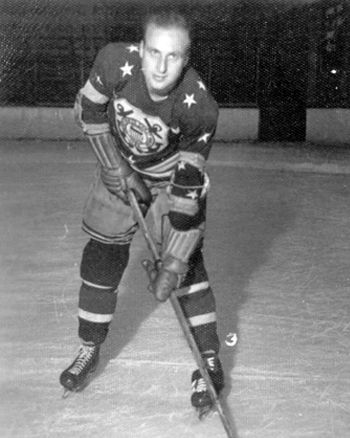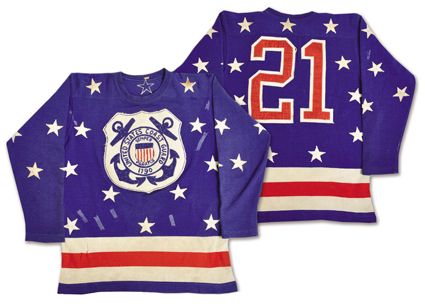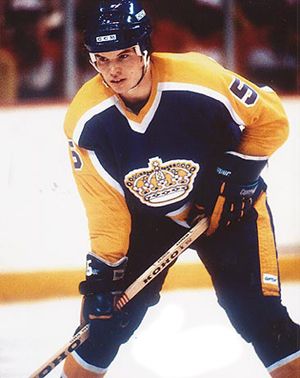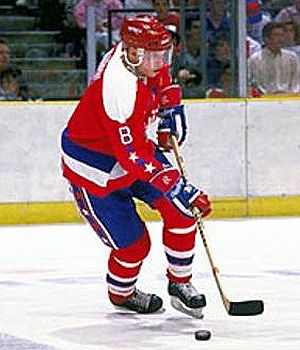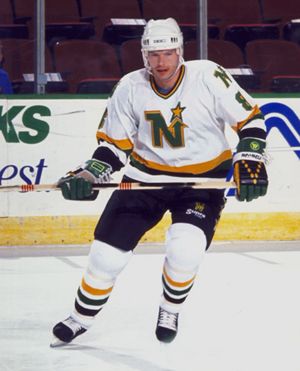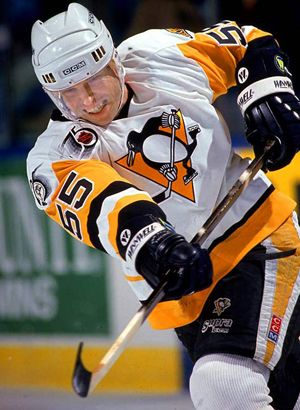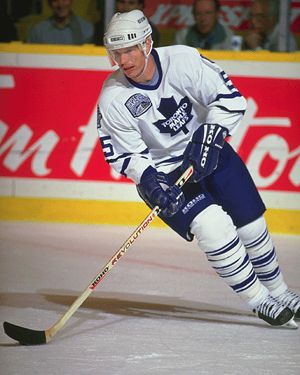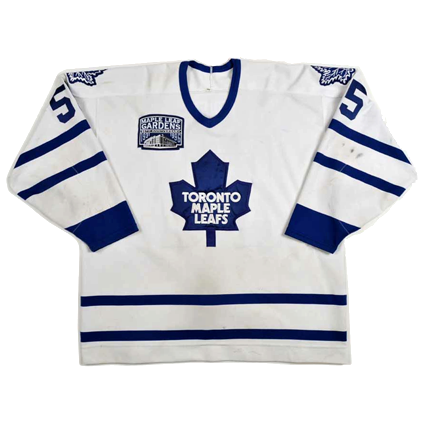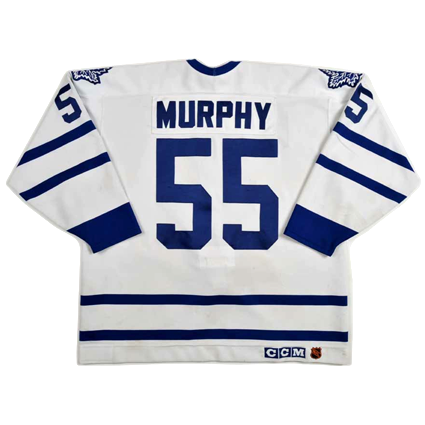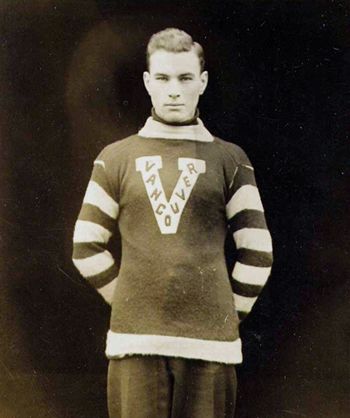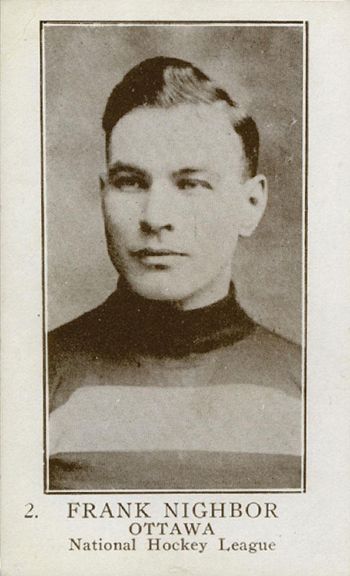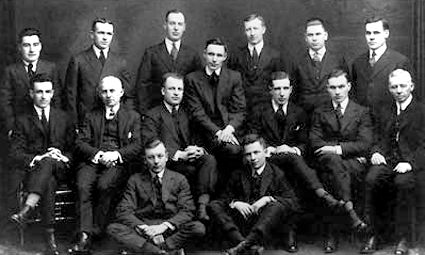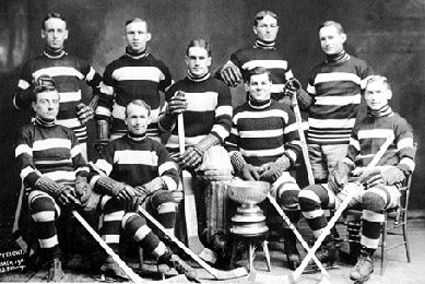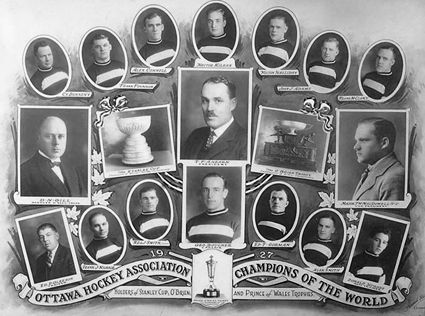He would play for the Toronto Aura Lee club in 1920-21 and 1921-22 before joining the New Haven Westminsters of the United States Amateur Hockey Association for the 1922-23 season.
He would not finish the season in New Haven however, as he was signed in late January by the Hamilton Tigers and made his debut on this date in 1923, becoming the first American-born player in the NHL. He would immediately make his presence known that night by scoring his first goal against none other than Georges Vezina of the Montreal Canadiens. Burch would eventually finish the season with 6 goals and 9 points in 10 games for Hamilton.
While Hamilton would finish last again, Burch would lead the club in scoring with 16 goals and 18 points to finish sixth in league scoring.
For the 1924-25 season the NHL would expand from just four teams to six with the addition of the Montreal Maroons and it's first American club, the Boston Bruins. Burch would lead the Tigers in scoring again with 20 goals and 24 points to finish seventh in NHL points. Following the season, Burch would be named the winner of the Hart Trophy as the league's Most Valuable Player.
After finishing last the previous year, the Tigers improved enough to finish as the regular season champions, but controversy arose due to the fact the league schedule expanded from 24 games to 30 to accommodate the two new clubs. The Tigers players demanded that their owner Percy Thompson play them an additional $200 each for the extra six games, but Thompson held fast to the fact their contracts were based on playing from December 1924 through March 1925 no matter how many games they played. The players stated they would rather retire than be taken advantage of and were subsequently all suspended and fined $200, which eliminated the Tigers from the Stanley Cup playoffs.
The entire debacle brought an end to the Tigers franchise and for the 1925-26 season, the players contracts were sold to the expansion New York Americans.
For 1926-27, Burch was joined in New York by junior hockey teammate Conacher and set a career high with 27 points for fourth overall in the NHL. At the conclusion of the season Burch was named by the league as the winner of the Lady Byng Trophy for "effectiveness and a true sporting spirit". He remains one of only seven players in league history to have won both the Hart and Lady Byng trophies during their career.
He missed time during the 1927-28 season, but still maintained his run of scoring double-digit goals with 10. After finishing last. the club revamped their roster for 1928-29, bring in goaltender Worters to reunite with Burch and Conacher. The changes paid off, as the team qualified for the playoffs for the first time after finishing second in the Canadian Division with Burch leading the team in scoring for the third time.
Burch would play three more seasons with the Americans, highlighted by 14 goals in 1930-31 and 22 points in both 1931 and 1932.
Prior to the start of the 1932-33 season, Burch was sold by the Americans to the Boston Bruins. After seeing limited playing time and only scoring 3 goals in 23 games, he was traded to the Chicago Blackhawks for the second half of the season. He would score the final 2 goals of his career before a broken leg would end his season and his career.
His final NHL totals were 390 games played, 137 goals and 198 points. Burch was inducted into the Hockey Hall of Fame in 1974.
Today's featured jersey is a 1925-26 New York Americans Billy Burch jersey as worn during the Americans inaugural season, the only one in which they would wear turtle neck sweaters.
The Americans would wear their star-spangled jerseys for the majority of their existence, but with many variations along the way, which included red shoulders from 1926-1930, an early experiment with names on the player's backs in 1926-27, featuring both the name "New York" until 1929-30 and "Americans" from 1930-31 to 1937-38 when the team changed to a much simpler white jersey for their final four seasons.
Today's video is a look at the New York Americans.

